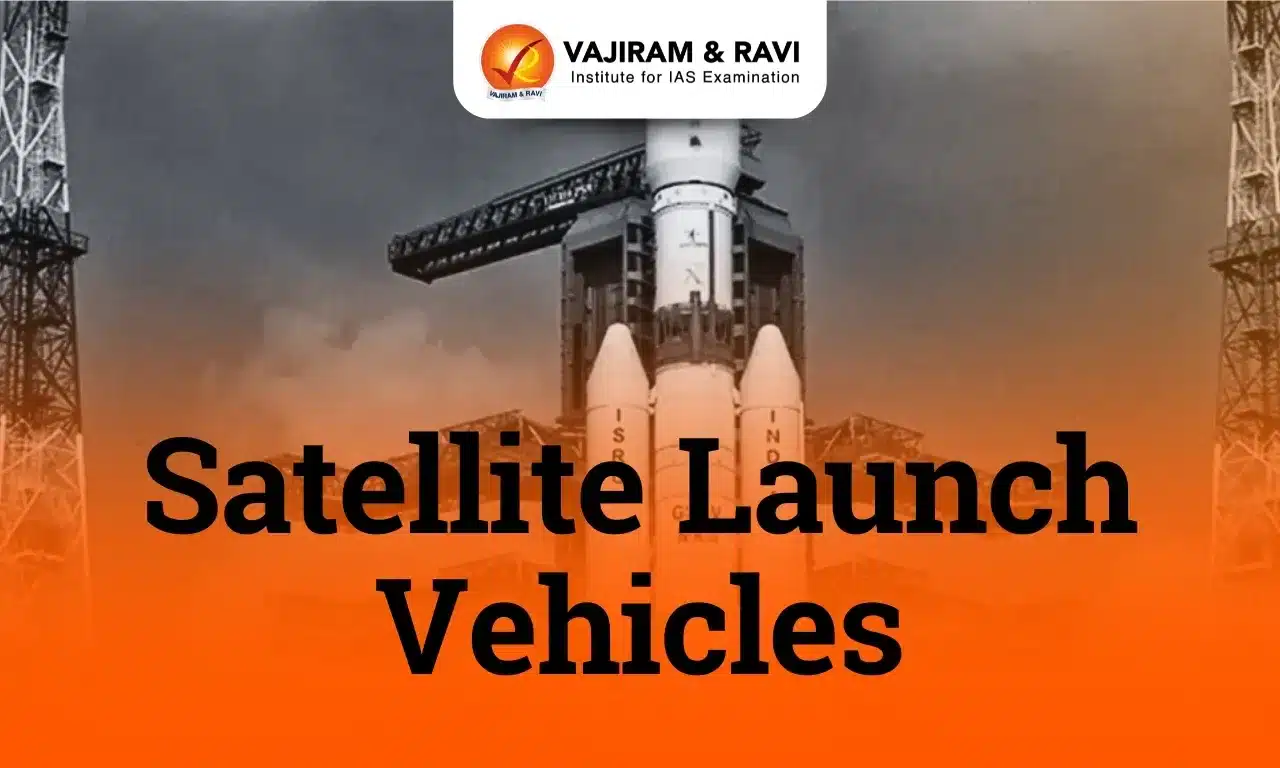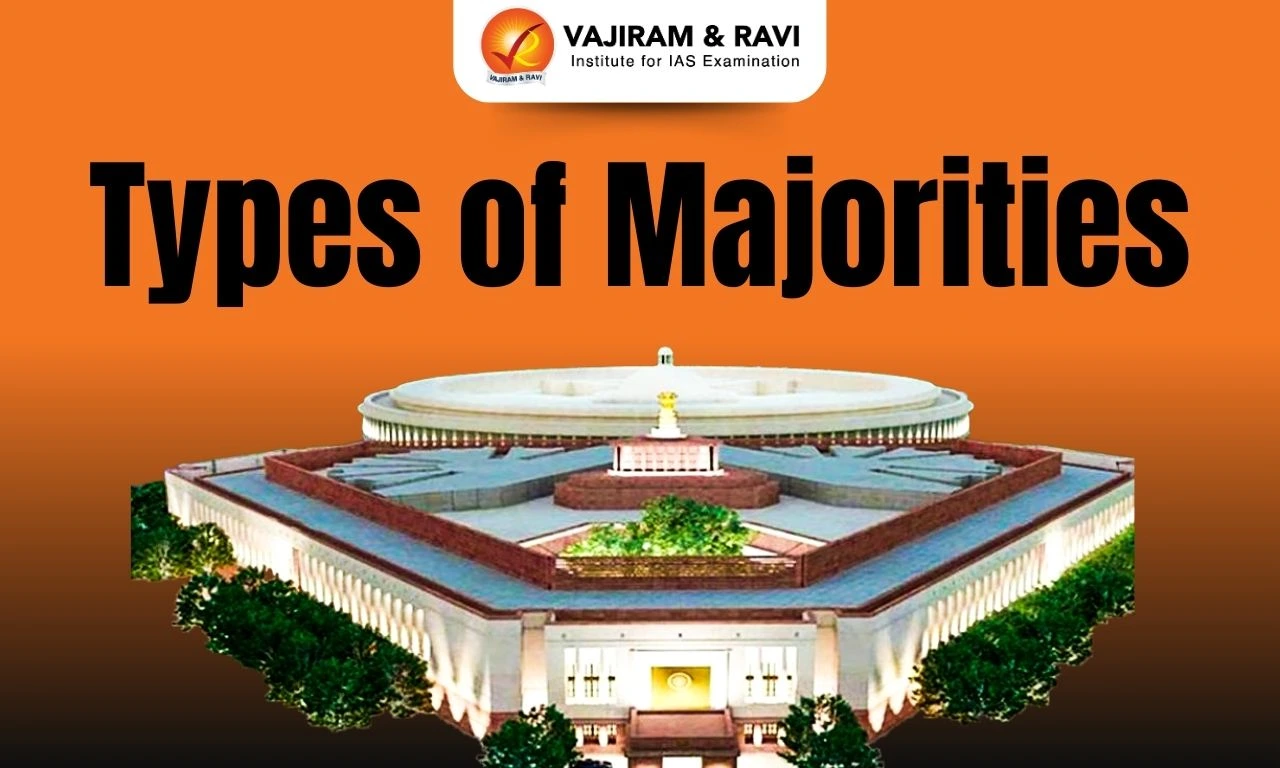Satellite Launch vehicles are the bedrock of space missions and satellite deployment in space. The satellite missions rely on powerful launch vehicles, also known as rockets, to carry satellites and payloads into space. The Indian Space Research Organisation (ISRO) has made significant progress in this area, playing a critical role in advancing India's capabilities in space exploration.
Satellite Launch Vehicles from ISRO have been critical in deploying satellites into various orbits for communication, earth observation, and scientific research.
What are Launch Vehicles?
A launch vehicle is a rocket-powered vehicle that transports a spacecraft beyond the Earth's atmosphere, either into orbit around the Earth or to another destination in outer space.
- Satellites are integral to space missions. However, they don't make their way into space independently. Instead, they rely on launch vehicles and powerful rockets for their celestial journey.
- These launch vehicles are equipped with robust propulsion systems that generate the immense energy required to overcome Earth's gravitational pull and lift heavy payloads, including satellites, into space.
- ISRO's journey into satellite launch vehicles began with the SLV, India's first experimental satellite launch vehicle, in 1980, and later with a more advanced Augmented Satellite Launch Vehicle.
- In 1994, ISRO launched its first PSLV and in 2001, ISRO further advanced the launch vehicle technology to build GSLV, which can take more heavy satellites in the Geosynchronous and Geostationary Orbit.
Working of Launch Vehicles
A launch vehicle is designed to transport payloads, such as spacecraft and satellites, from Earth's surface into space. It operates on well-established principles of physics and engineering.
- Rocket propulsion system: Launch vehicles are rockets and rely on the basic principles of action and reaction, as described by Newton's Third Law of Motion.
- The propulsion system is responsible for generating the necessary force to lift the rocket off the ground.
- Multiple stages: Launch vehicles have multiple stages that separate and fall away as the rocket ascends.
- Each stage contains its own engines and propellant, and it is discarded when it is no longer needed.
- Fuel and propellant: Launch vehicles use a combination of fuel and oxidizer, called propellant, to generate thrust.
- Common propellants include liquid hydrogen and liquid oxygen (LH2/LOX).
- Guidance system: Launch vehicles use precise guidance and control systems to maintain their intended trajectory.
- Payload fairing: The payload, such as a satellite, is enclosed within a protective shell called payload fairing.
- The fairing shields the payload from aerodynamic forces and heat during the initial stages of flight.
- Once the rocket reaches space, the fairing is jettisoned to expose the payload, and the satellite is inserted into the intended orbit.
Retired Satellite Launch Vehicles of ISRO
ISRO’s journey with satellite launch vehicles began in the 1960s, with sounding rockets and later the development of SLV under the guidance of Dr. Abdul Kalam. It was later followed by an Augmented Satellite Launch Vehicle (ASLV).
- Both the SLV and ASLV have been retired now.
SLV (Satellite Launch Vehicle)
- It was India's first experimental satellite launch vehicle.
- It was a four-stage (all solid) vehicle that launched 40 kg of payloads into Low Earth Orbit (LEO).
- On July 18, 1980, it was successfully launched from the Sriharikota and the Rohini satellite (RS-1), was placed in orbit, making India the sixth member of an exclusive club of space-faring nations.
ASLV (Augmented Satellite Launch Vehicle)
- SLV-3 was followed by ASLV, which was in operation until the 1990s, before the development of the launch vehicle PSLV.
- It was a five-stage, all-solid propellant vehicle with the mission of orbiting 150 kg class satellites into 400 km circular orbits.
Active Satellite Launch Vehicles of ISRO
The ISRO has developed a range of SLVs to launch satellites into different orbits around Earth. Currently, the PSLV, GSLV, and Geosynchronous Satellite Launch Vehicle Mk-III (LVM3) are active operational launch vehicles in India.
Sounding Rockets
- Sounding rockets are one- or two-stage solid-propellant rockets employed to explore the upper atmosphere as well as carry out space research.
- Sounding rockets enabled the use of rocket-borne instrumentation to probe the atmosphere in situ.
- The first rockets were two-stage Russian (M-100) and French (Centaure) rockets. ISRO began launching indigenously built sounding rockets in 1965.
- The first sounding rocket was launched in 1963 from Thumba near Thiruvananthapuram, marking the beginning of the Indian Space Programme.
- The Rohini Sounding Rocket (RSR) Programme consolidated all sounding rocket activities in 1975.
- Currently, three operational sounding rocket versions are available, with payloads ranging from 8 to 100 kg and apogees ranging from 80 to 475 km.
Polar Satellite Launch Vehicle (PSLV)
- It is India's third-generation launch vehicle, first successfully launched in October 1994.
- It is the first Indian launch vehicle to have liquid stages.
- It is a four-stage vehicle with multiple satellite launch capabilities and multiple orbit capabilities.
| Stages of PSLV | Use of Equipment |
| First stage | Solid rocket motor S139 |
| Second stage | Earth storable liquid rocket engine (Vikas engine) |
| Third stage | Solid rocket motor S7 (provide high thrust to the upper stages) |
| Fourth stage | Two Earth storable liquid engines |
- PSLV-XL, QL, and DL variants use 6,4,2 solid rocket strap-on motors to supplement the thrust provided by the first stage.
- Strap-ons, on the other hand, are not used in the core-alone version of PSLV (PSLV-CA).
- Due to PSLV's unmatched reliability, numerous satellites, including satellites from the IRNSS constellation, have been launched into geosynchronous and GEO.
- Thus, it is regarded as “the workhorse of ISRO” for Low Earth Orbits (LEO).
- Payload capacity: It can carry up to 1,750 kg of payload to 600 km altitude Sun-Synchronous Polar Orbits.
- Numerous Indian and foreign customer satellites have been launched by PSLV.
- It successfully launched Chandrayaan-1 in 2008 and Mars Orbiter Spacecraft in 2013.
Geosynchronous Satellite Launch Vehicle (GSLV)
- It is a 4th generation launch vehicle designed to place communication satellites in geostationary transfer orbit using a cryogenic third stage. It was used for launching Chandrayaan-2.
- It is a three-stage vehicle with four liquid strap-ons. Initially, cryogenic stages from Russian GK were used; later, it was developed indigenously.
| Stages of GSLV | Use of Equipment |
| First stage | Solid rocket motor S139 (Augmented by 4 liquid strap-ons) |
| Second stage | Vikas engine |
| Third stage | Cryogenic Upper Stage Project |
- Payload capacity: GSLV is capable of placing up to 6 tonnes of payloads in Low Earth Orbits, from heavy satellites to multiple smaller satellites.
- Further, it is capable of putting a 2,250 kg satellite into Geosynchronous Transfer Orbit (GTO), such as the INSAT and GSAT communication satellites.
- GSLV with indigenous Cryogenic Upper Stage made possible the launch of communication satellites weighing up to 2 tonnes.
- In comparison to solid and earth-storable liquid propellant rocket stages, a cryogenic rocket stage is more efficient and provides more thrust per kilogramme of propellant burned.
LVM3 (Geosynchronous Satellite Launch Vehicle Mk III)
- It is a next-generation launch vehicle of ISRO.
- Previously it was known as Geosynchronous Satellite Launch Vehicle Mk III (GSLV MkIII).
- It is a three-stage vehicle with two solid strap-on motors, one liquid core stage and a high-thrust cryogenic upper stage.
| Stages of GSLV | Use of Equipment |
| Core stage | S200 solid motor |
| Liquid stage | Two Vikas engines |
| Cryogenic upper stage | Indigenous high thrust cryogenic engine (CE20) |
- Payload capacity: It is capable of putting the GSAT series' 4-tonne satellites into Geosynchronous Transfer Orbits.
- LVM3's powerful cryogenic stage allows it to place payloads of up to 8000 kg into 600 km Low Earth Orbits. Recently, it was used for launching the Chandrayaan-3 mission.
Satellite Launch Vehicles of ISRO Under Development
ISRO has been advancing its technology to build new satellites according to the need and future prospects such as space stations, manned missions and the launching of small satellites. Following are the satellite launch vehicles of ISRO under development:
- Human Rated Launch Vehicle (HRLV):
- It will be the modified version of the current heavy-weight LVM-3 launch vehicle.
- It will be capable of launching the Orbital Module into a 400 km Low Earth Orbit.
- It will include a Crew Escape System (CES) powered by quick-acting and high-burn rate solid motors.
- It will be the modified version of the current heavy-weight LVM-3 launch vehicle.
- Small Satellite Launch Vehicle (SSLV):
- It is a three-stage launch vehicle with three solid propulsion stages and a terminal stage based on liquid propulsion called the Velocity Trimming Module.
- It is capable of launching nano, micro and mini satellites up to 500 kg satellite in a 500km planar orbit.
- Reusable Launch Vehicle - Technology Demonstrator (RLV-TD):
- The RLV-TD's configuration resembles that of an aircraft because it combines the complexity of launch vehicles and aeroplanes.
- It comprises a nose cap, a fuselage (body), two delta wings, and two vertical tails. Elevons and Rudder, which are symmetrically placed active control surfaces, are also included.
- In future, it will be scaled up to become the first stage of India’s reusable two-stage orbital launch vehicle.
- SpaceX has the Falcon 9, one of the most important heaviest reusable launch vehicle.
- Scramjet Engine - TD:
- A scramjet engine outperforms a ramjet engine by operating at hypersonic speeds and allowing supersonic combustion. The engine uses Hydrogen as fuel and Oxygen from the atmospheric air as the oxidiser.
- The first experimental mission of the Scramjet Engine towards the realisation of an Air Breathing Propulsion System was successfully conducted in 2016 by ISRO.
- India is the fourth country to demonstrate the flight testing of a Scramjet Engine.
Notable Foreign Launch Vehicles
The ISRO has utilised various foreign launch vehicles for launching satellites. Some of the notable foreign launch vehicles are given below:
- Arien 5: It is one of the heavy-lift launchers used by European Space Agency. It is capable of carrying payloads weighing more than 20 metric tons into LEO and over 10 metric tons to geostationary transfer orbit.
- India has used Arien 5 launch vehicles for launching manby communication and earth observation satellites such as INSAT-3D and GSAT 30.
- Falcon 9: It is the world's first orbital class reusable rocket with two-stages designed and manufactured by SpaceX. It is capable of launching payload of 22 metric tonnes to the Low Earth Orbit and 8 metric tonnes to Geostationary orbit.
- Space Launch System (SLS): It is a super heavy-lift rocket developed by NASA. It is capable of launching a payload of 70 metric tonnes to LEO.
- It is the only rocket capable of transporting the Orion spacecraft, four astronauts, and large cargo to the Moon in a single mission.
- It includes both crew and service modules and a launch abort system.
- Soyuz 5: It is one of heaviest launch vehicle of the Russian Space Agency, with capability of launching 17 metric tonnes to the LEO.
Last updated on December, 2025
→ Check out the latest UPSC Syllabus 2026 here.
→ Join Vajiram & Ravi’s Interview Guidance Programme for expert help to crack your final UPSC stage.
→ UPSC Mains Result 2025 is now out.
→ UPSC Notification 2026 is scheduled to be released on January 14, 2026.
→ UPSC Calendar 2026 is released on 15th May, 2025.
→ UPSC Prelims 2026 will be conducted on 24th May, 2026 & UPSC Mains 2026 will be conducted on 21st August 2026.
→ The UPSC Selection Process is of 3 stages-Prelims, Mains and Interview.
→ UPSC Result 2024 is released with latest UPSC Marksheet 2024. Check Now!
→ UPSC Toppers List 2024 is released now. Shakti Dubey is UPSC AIR 1 2024 Topper.
→ Also check Best IAS Coaching in Delhi
FAQs on Satellite Launch Vehicle
Q1. What is a satellite launch vehicle?+
Q2. What was the first space launch vehicle of ISRO?+
Q3. What is the role of launch vehicles in satellite missions?+
Q4. What are the active satellite launch vehicles used by ISRO?+
Q5. What is the significance of PSLV (Polar Satellite Launch Vehicle) in ISRO's missions?+

























